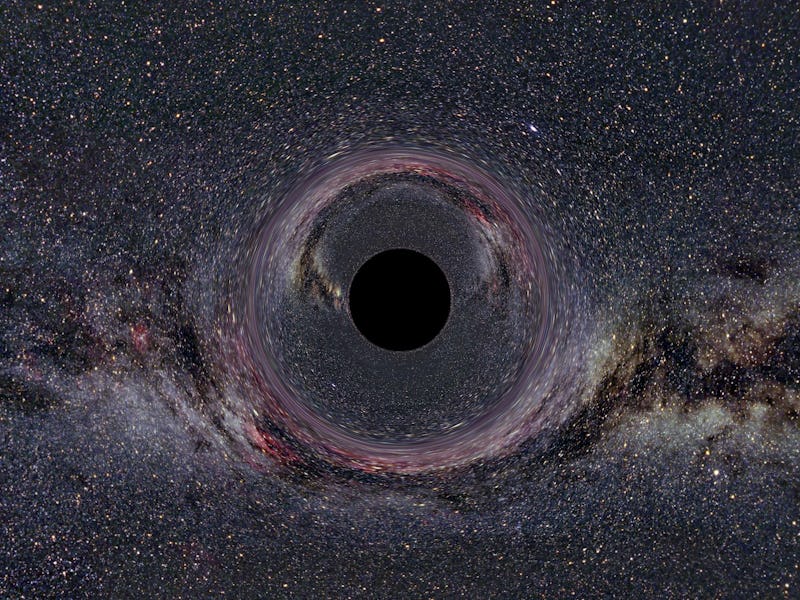Scientists discover what fueled ancient supermassive black holes
How supermassive black holes managed to grow in the early universe was a mystery -- until now.

In the beginning of the cosmos, more than 13 billion years ago, things were quiet, hot, and dense. As the universe cooled and started to expand, galaxies and stars began forming. And at the center of these galaxies, dark monsters began to grow, some becoming billions of masses larger than our own Sun.
For years, scientists have been trying to figure out how the most-ancient supermassive black holes managed to grow to such a mass at a time when the universe had scant resources for them to feed on.
Now, astronomers have peered into the cosmic dawn to uncover the history of the first supermassive black holes and their host galaxies. Their observations reveal halos of gas surrounding galaxies that may have essentially served as food storage units for the first black holes.
The study, published in the Astrophysical Journal on Thursday, provides new insight into the formation of black holes, and how galaxies form and evolve over time.
“We knew that there were supermassive black holes that exist in the early universe, but we didn’t know how these objects can form so quickly,” Emanuele Paolo Farina, astronomer at the Max Planck Institute for Astronomy in Germany and lead author of the study, tells Inverse. “How do the black holes grow and sustain in such a short time scale?”
To answer that question, Farina and his team observed 31 quasars — extremely bright galactic nuclei — situated some 12.5 billion light years away. By doing so, they were able to glimpse the state of these galaxies when the universe was in its infancy — a mere 870 million years old.
They found large reservoirs made up of cool, dense hydrogen gas surrounding 12 of the galaxies extending up to 100,000 light years away from the black holes. The gas halos around each galaxy provide enough material to fuel star formation — and have a little left over for the black hole to feed on.
Scientists had previously speculated that these halos of gas would provide the main fuel for supermassive black holes, but no one had been able to observe it before. Using the European Space Agency’s Very Large Telescope was a “game changer,” he says. It allowed the team to peer further back into the history of the universe with the largest sample of ancient quasars yet.
“We had this idea in mind, but we don’t know whether it’s true or not. And now, we actually see what we want to see,” Farina says.
An artist's impression of gas halo surrounding a galaxy in the early years of the universe.
Quasars provide a unique opportunity to study this phenomenon given their high luminosity. It’s the same as bringing a candle closer to you — you’ll be able to see it more brightly, Farina says.
Strikingly, the study reveals that the earliest supermassive black holes are not that different from the ones we observe in the more recent universe.
“The object already appeared whole, which is really strange,” Farina says. “Basically, there is no real evolution from one billion years after the Big Bang to 13 billion years.”
The data also provide some new perspective on galaxies and how they interact with their surroundings. “What we’re learning with time is that galaxies are not isolated systems that form and grow on their own without interacting with their environment,” Farina says. “The close neighborhood of the galaxy is actually a really complicated place.”
Moving forward, the team hopes to observe ancient galaxies in the early universe in even more detail. Doing so could lead them to understand how our own galaxy formed over time, and how it interacts with its galactic neighbors.